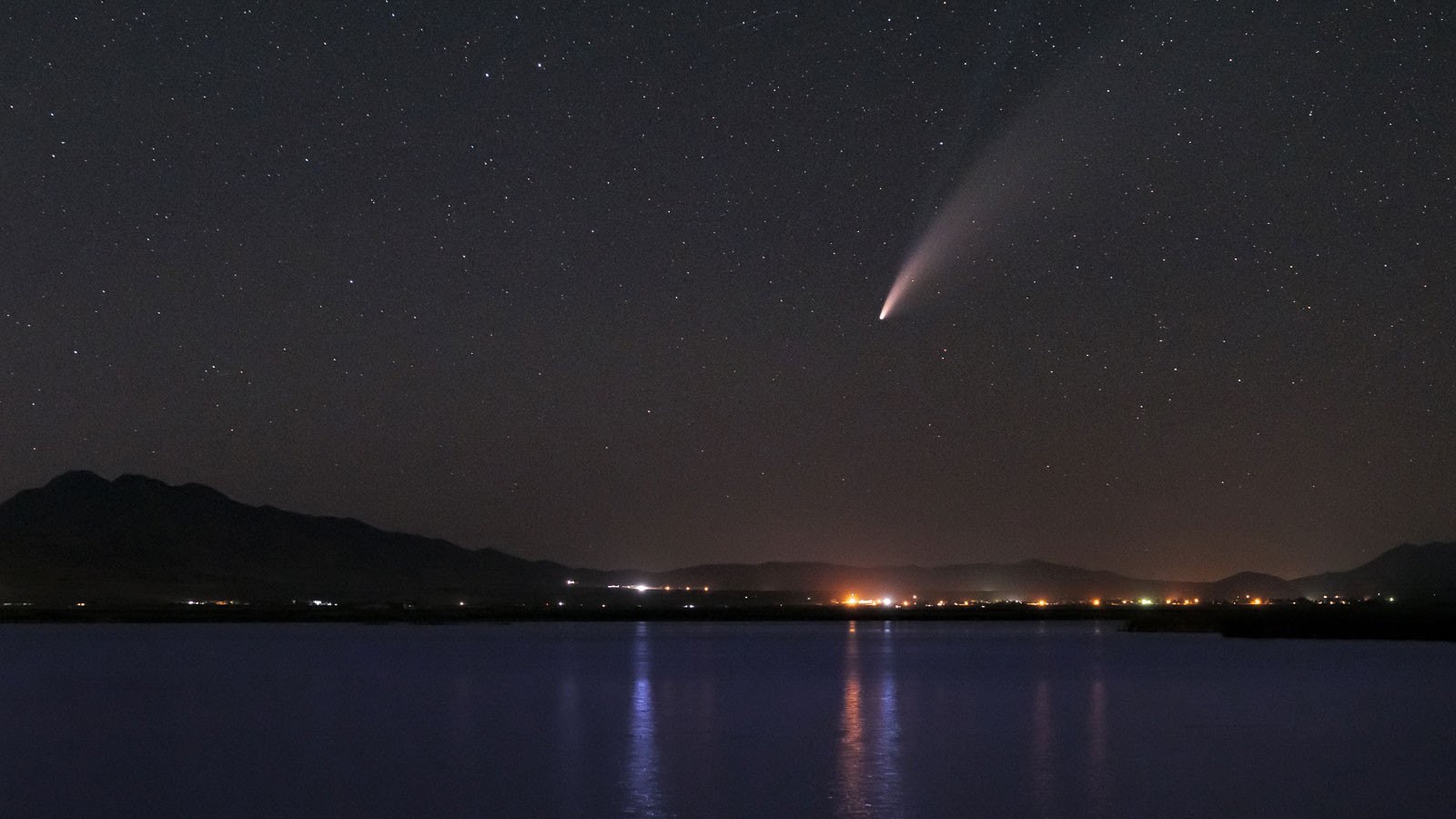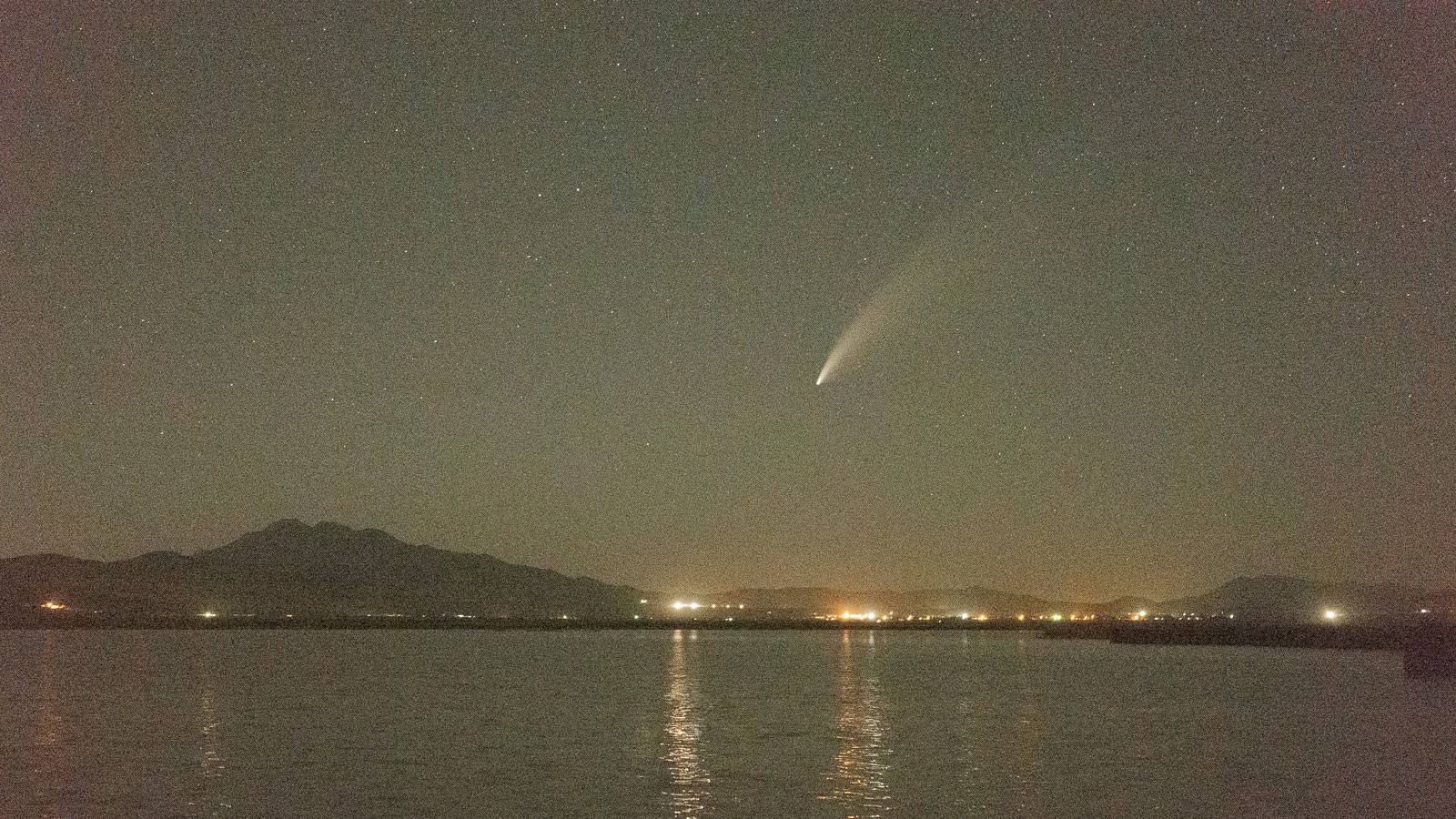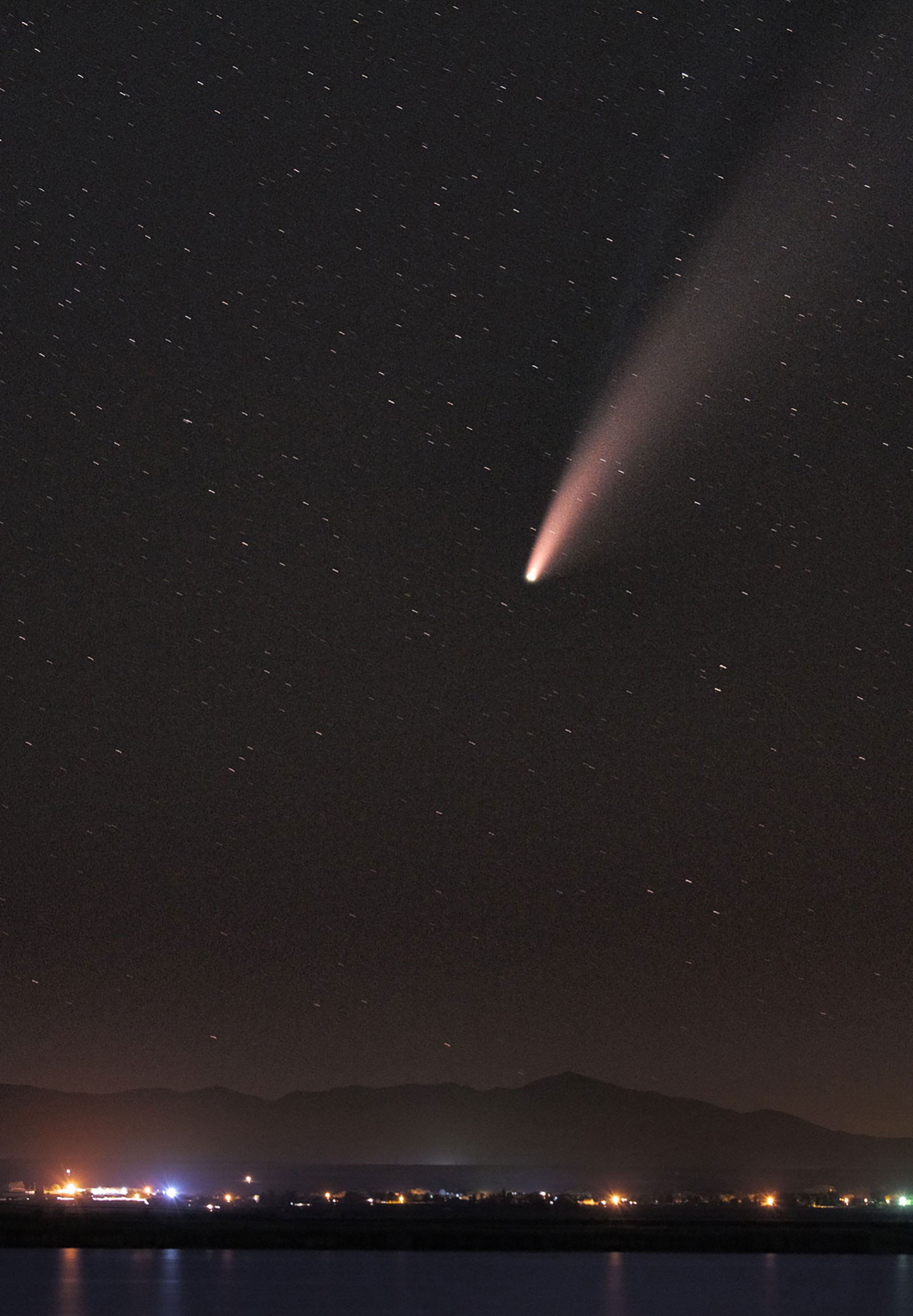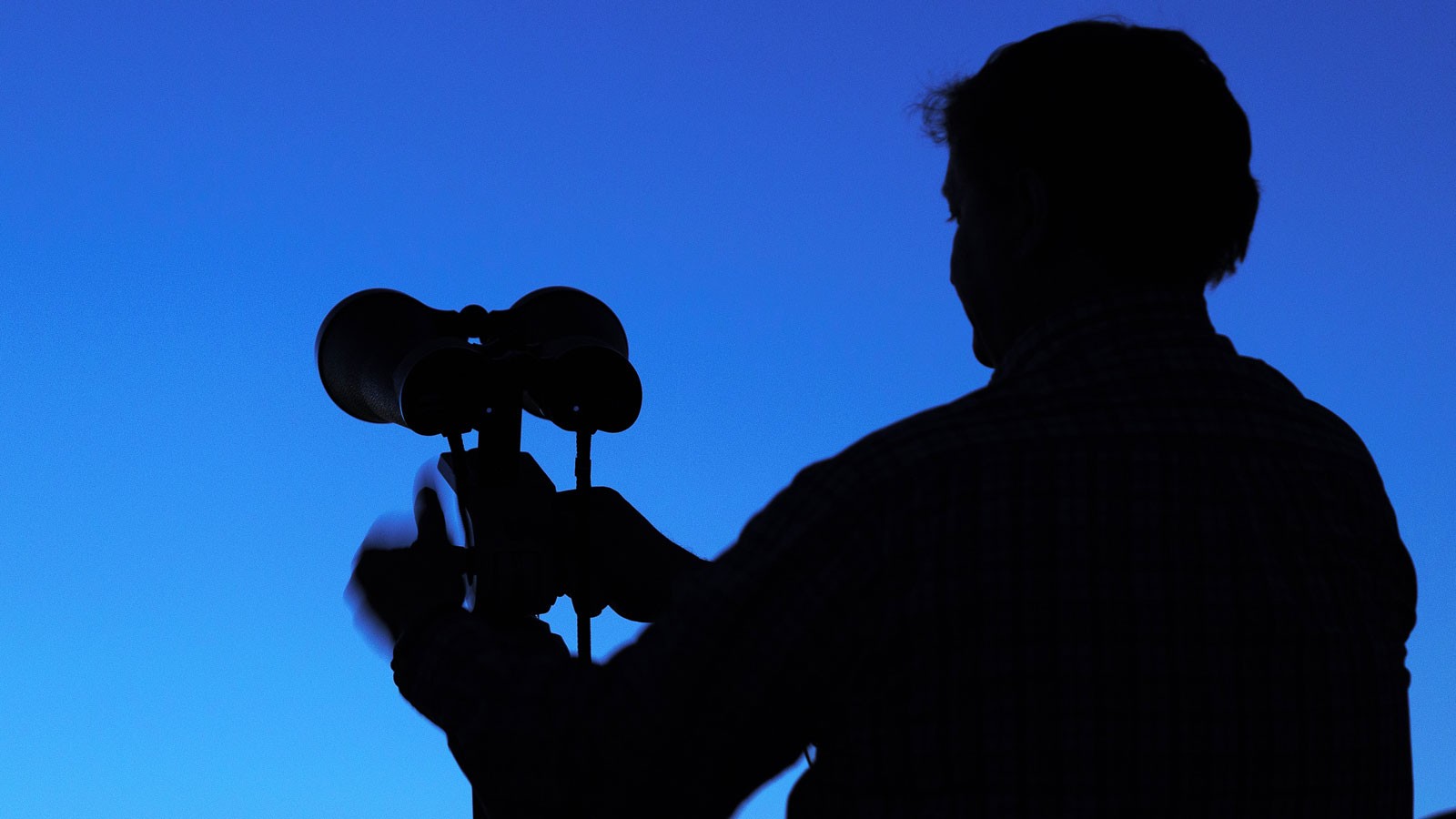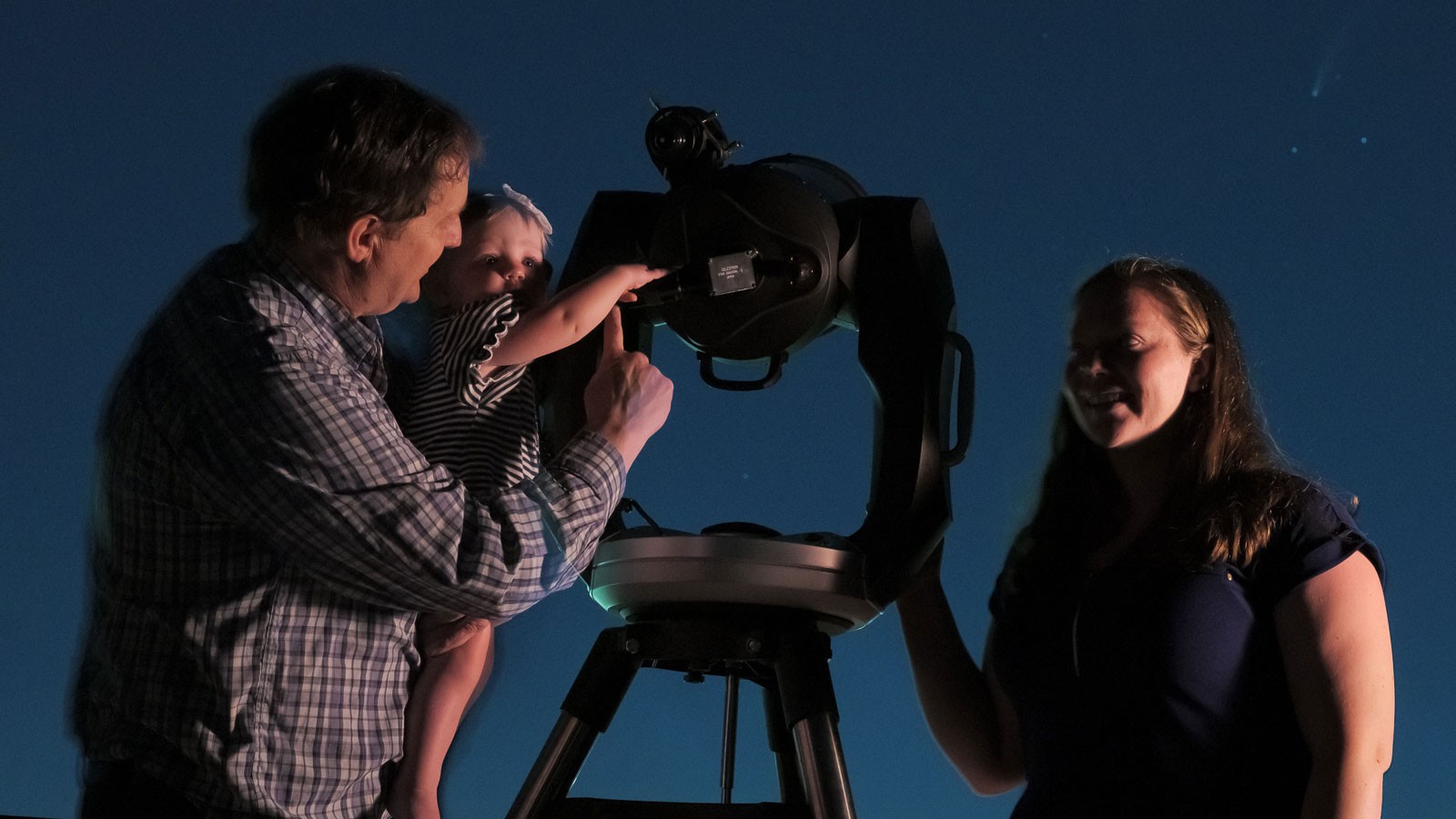Seven Tips for Photographing the NEOWISE Comet
By Levi Sim |
Isn’t it amazing that the NEOWISE comet was discovered by a space telescope built at Utah State University? I think that is so cool. When Comet Hale-Bopp passed by in 1997, I was just getting started in my high school photography class. I remember trying to photograph the comet, but my results were not worth keeping.
Hopefully these tips will help you make a picture worth keeping and sharing with your kids when the next great comet comes around.
1. Don’t Buy Expensive Tools
You could probably make a fair picture with your smartphone, using certain apps, but I’m talking about using a DSLR or mirrorless camera. In fact, any camera with Manual Mode could get it done. There are so many cameras out there that I can’t speak to every model, but these tips should work with most of them.
All you need is a camera, the lens it came with, a fresh battery, an empty memory card, and way to make it stable.
2. Switch to Manual Mode
Your camera has lots of presets to help you make a good picture, but it gives up when you point it at the stars. Just switch it to Manual Mode, the big “M” on the dial. Use your manual to help you dial in the following settings.
3. Aperture: f/11
Set the aperture to f/11 (that’s the opening in the lens that lets light in). This will help ensure you get a picture that looks crisp and sharp. Your camera may not have a dial dedicated to changing the aperture, so look for a button that says “Av,” or has a little aperture picture next to it.
4. ISO: 3200
ISO is how sensitive the camera is to light, and a high number is more sensitive. Crank it up to 3200 and you’ll see a lot more stars in your picture than you can see with your eyes. 3200 is pretty high, and the trade-off is that the picture will look a little grainy, a little noisy. It’s ok. It’s better to have a noisy picture than no picture at all.
5. Shutter Speed: 4 Seconds
Turn the dial on your camera to change the shutter speed to four seconds. What you normally see for shutter speed is a fraction of a second. It may look like 1/250 or it might just say 250. Now turn the dial so it’s slower (1/10 is slower than 1/250).
When you get down to one second the display will read 1”, which means 1 second. Keep going to 4”.
This is a good place to start, but you can change the shutter speed to make the whole picture brighter or darker.
6. Turn on Long Exposure NR
This is key, and you might need to check your manual or Google the instructions for your camera. Long Exposure Noise Reduction makes your picture look a whole lot better by removing most of that noise I talked about in step #4.
The only catch is that it takes twice as long to make a picture. Your shoot for four seconds, then it’s another four seconds before you can see the photo. Be patient, it’s worth the extra time for a better-looking picture.
7. Get Composed & Focused
Focusing the lens on the stars is probably the hardest part of the process, but you can do it. Start by turning the ISO to its highest setting and setting the shutter speed to about 1/15 of a second (you’ll go back to your other settings in a minute).
With a high ISO and a faster shutter speed you’ll be able to see the picture immediately instead of waiting eight seconds. It’s hard to see through your viewfinder to compose a picture at night, so turn on Live View if your camera has it. That also makes it much easier to focus.
Use the center-most focus point in your viewfinder — it’s the most accurate and easiest to use at night. Try to focus on the edge of the horizon or a far-away tree at the edge of the sky. The camera can’t focus on the stars well, but it may be able to see the edge of a tree against the sky.
Once you get a picture with the horizon in focus, flip the switch on the lens to “Manual Focus” so it won’t try to re-focus between shots.
Other Tips
Use a tripod, a bean bag or a rolled-up sweatshirt on the roof of your car to make the camera stable for four seconds.
Turn on the camera’s timer for 2 seconds, or use “Shutter Delay Mode” to allow the camera to stop moving after you press the shutter button.
If you zoom in more, the stars will appear to be lines instead of dots because the Earth is rotating while you shoot. Turn the ISO higher and use a shorter shutter speed.
Remember: The picture is supposed to be black! It’s nighttime, after all.
Be courteous to other viewers and keep social distancing in mind.
When can I see the Comet?
You’ll be able to photograph the comet about an hour after sunset. On the USU Logan Campus, I was able to start photographing at about 10:15 pm. Away from city lights, you might be able to see it sooner.
Where can I see the Comet?
To my eyes, the comet is a little brighter than the Milky Way. If you can get outside the city where it is darker, and look toward the northwest to find it pretty quickly. Find the Big Dipper and then scan downward. Binoculars will help, especially if you can put them on a tripod.
A popular place to view the comet in Cache Valley is at Benson Marina. It’s just far enough away that you can see it with un-aided eyes by 11 p.m.
But you can see it almost anywhere looking to the Northwest in the evening, or the North East before sunrise. That means you can get creative with foregrounds. Water is nice in the foreground because it gives a little reflection that lightens up the ground. Try light painting with a flash light, too.
Most Importantly
Go see the comet! Take binoculars if you have them and go watch something that doesn’t happen every year. Take the kids or grandkids or the neighbor kids. It’s cool to see and wonder what it has seen as it travels around the solar system.
Tips courtesy of Levi Sim, Utah State University’s photographer since summer 2020.
A high ISO reduces the quality of the picture, but it makes it easy to focus and compose.
When you zoom in, the stars appear to move more during your exposure, resulting in dashes instead of dots.
Binoculars are a great way to view the comet.
This is my favorite from my first night out — I even caught an iridium flare of a satellite.
James Coburn has taught thousands of students to view the stars. His daughter's first words were "Hale-Bopp" and now he can share his passion with his granddaughter, too.
WRITER
Levi Sim
University Photographer
University Marketing and Communications
435-797-0902
levi.sim@usu.edu
TOPICS
Community 446stories Outdoor 80stories Recreation 69stories Photography 39storiesComments and questions regarding this article may be directed to the contact person listed on this page.


